Table of Contents
Addressing Educational Inequality in Scottish Schools: Closing the Attainment Gap Between Affluent and Deprived Areas
Introduction
Scotland’s commitment to educational excellence for all has been a cornerstone of its national identity and policy agenda for decades. Yet, despite significant investment and numerous policy initiatives, the attainment gap between students from Scotland’s most affluent and most deprived areas remains stubbornly persistent. Recent data from 2024 reveals that this gap has actually widened since the COVID-19 pandemic, reversing previous progress and raising urgent questions about educational equity in Scotland. This article examines the current state of educational inequality in Scottish schools, identifies the key challenges in closing the attainment gap, and proposes evidence-based solutions that could help ensure all Scottish children have an equal opportunity to fulfill their potential, regardless of their socioeconomic background.
Current State of the Sector
Educational inequality in Scotland is starkly illustrated by the latest attainment data. According to the Scottish Qualifications Authority (SQA), the gap between pupils from the most and least deprived parts of Scotland has widened significantly since 2019. The 2024 SQA statistics show that after a temporary reduction during the pandemic years when alternative assessment methods were used, the poverty-related attainment gaps at National 5, Higher, and Advanced Higher levels are now all wider than they were pre-pandemic.
At National 5 level (SCQF level 5), the attainment gap stood at 17.2 percentage points in 2024, compared to 16.9 percentage points in 2019. For Higher qualifications (SCQF level 6), the gap has increased to 17.2 percentage points, up from 15.0 percentage points in 2019. The Advanced Higher level (SCQF level 7) shows a similar trend, with the gap widening to 15.5 percentage points in 2024 from 13.2 percentage points in 2019.
These statistics are particularly concerning given the Scottish Government’s flagship policy, the Scottish Attainment Challenge (SAC), which was launched in 2015 with the explicit aim of closing the poverty-related attainment gap. Despite an investment of over £750 million since its inception, the initiative’s impact appears to have been eroded, as acknowledged by Education Secretary Jenny Gilruth in March 2025.
The gap is not limited to examination results. Early years data shows that children from deprived areas are significantly behind their peers in developmental milestones before
they even start school. By age 5, there is already a 13-month gap in vocabulary development between children from the lowest and highest income households. This early disadvantage often compounds throughout the education journey, resulting in lower rates of positive destinations (employment, training, or further education) for school leavers from deprived areas.
Challenges and Gaps in Policy
Systemic and Structural Barriers
One of the fundamental challenges in addressing educational inequality is that schools alone cannot solve problems rooted in broader societal inequalities. As noted in the Scottish Parliament’s Education Committee report (2022), “the poverty-related attainment gap cannot be solved by school-based interventions alone.” Housing quality, family income, parental education, health inequalities, and access to resources all significantly impact educational outcomes. These structural factors often lie beyond the direct influence of education policy.
COVID-19 Pandemic Impact
The pandemic has exacerbated existing inequalities in profound ways. During school closures, students from disadvantaged backgrounds were less likely to have access to suitable devices, reliable internet connections, quiet study spaces, and parental support for home learning. Research from the Growing Up in Scotland study indicates that these disparities have had lasting effects on learning progress, with disadvantaged students experiencing greater learning loss and slower recovery.
Resource Distribution and Targeting
While the Scottish Attainment Challenge has directed significant funding toward closing the gap, questions remain about the effectiveness of resource allocation. The initial approach focused heavily on nine “challenge authorities” with high levels of deprivation, but this meant that disadvantaged pupils in other areas received less support. The 2022 refresh of the SAC aimed to address this by allocating funding to all local authorities based on deprivation levels, but concerns persist about whether resources are reaching the students most in need.
Teacher Recruitment and Retention in Disadvantaged Areas
Schools in Scotland’s most deprived areas often struggle to recruit and retain experienced teachers. Data from the General Teaching Council for Scotland shows higher staff turnover rates in schools serving disadvantaged communities, leading to less stability and continuity for the students who would benefit most from consistent, high-quality teaching. Additionally, teachers in these schools report feeling inadequately prepared to address the complex needs of students experiencing poverty and related challenges.
Innovative Solutions and Approaches
Whole-System Approach to Educational Equity
Addressing educational inequality requires a coordinated approach that extends beyond schools to tackle the root causes of disadvantage. This could include:
- Integrating education policy with broader anti-poverty strategies, including housing, health, and family support
- Establishing formal collaboration mechanisms between education, social services, healthcare, and community organizations
- Developing place-based approaches that tailor interventions to local needs and leverage community assets
- Ensuring policy coherence across different government departments and levels
The East Lothian Poverty Commission provides a promising model, bringing together multiple agencies to address the interconnected factors affecting educational outcomes in disadvantaged communities.
Evidence-Based Targeted Interventions
Research consistently shows that certain interventions have stronger evidence of effectiveness in closing attainment gaps:
- Early years interventions that support language development, social skills, and parental engagement
- High-quality, sustained tutoring programs for students falling behind, particularly in literacy and numeracy
- Metacognitive approaches that develop students’ ability to plan, monitor, and evaluate their own learning
- Enhanced transitions support between educational stages, particularly from primary to secondary school
The Education Endowment Foundation’s Teaching and Learning Toolkit offers a valuable resource for schools to identify high-impact, cost-effective interventions based on robust evidence.
Professional Development and Leadership
Enhancing teacher capacity to address educational inequality is crucial:
- Developing specialized initial teacher education modules focused on teaching in high-poverty contexts
- Creating career pathways and financial incentives to attract and retain talented teachers in disadvantaged schools
- Establishing professional learning communities where teachers can share effective practices for closing attainment gaps
- Strengthening school leadership capacity to create equity-focused school cultures and effectively use data to target interventions
The Stepping Stones for Success program in North Lanarkshire demonstrates how focused leadership development can transform practice in schools serving disadvantaged communities.
Data-Driven Approaches and Digital Solutions
Leveraging technology and data can help identify and address learning gaps more effectively:
- Implementing early warning systems that identify students at risk of falling behind
- Using adaptive learning technologies that personalize education to individual student needs
- Developing data dashboards that help teachers and school leaders track progress in closing attainment gaps
- Ensuring digital equity through device provision, connectivity solutions, and digital skills development
The West Partnership Regional Improvement Collaborative’s Data for Improvement initiative shows how collaborative data use can drive targeted interventions across school clusters.
Conclusion
Closing Scotland’s educational attainment gap remains one of the nation’s most pressing challenges, particularly as recent data indicates a concerning widening of disparities since the pandemic. However, the evidence suggests that with a comprehensive, multi-faceted approach that addresses both in-school factors and broader societal inequalities, progress is possible.
By combining whole-system coordination, evidence-based interventions, enhanced professional capacity, and innovative data-driven approaches, Scotland can renew its commitment to educational equity. The stakes could not be higher – educational inequality not only limits individual potential but also undermines social cohesion, economic prosperity, and Scotland’s aspiration to be a fair and inclusive society.





